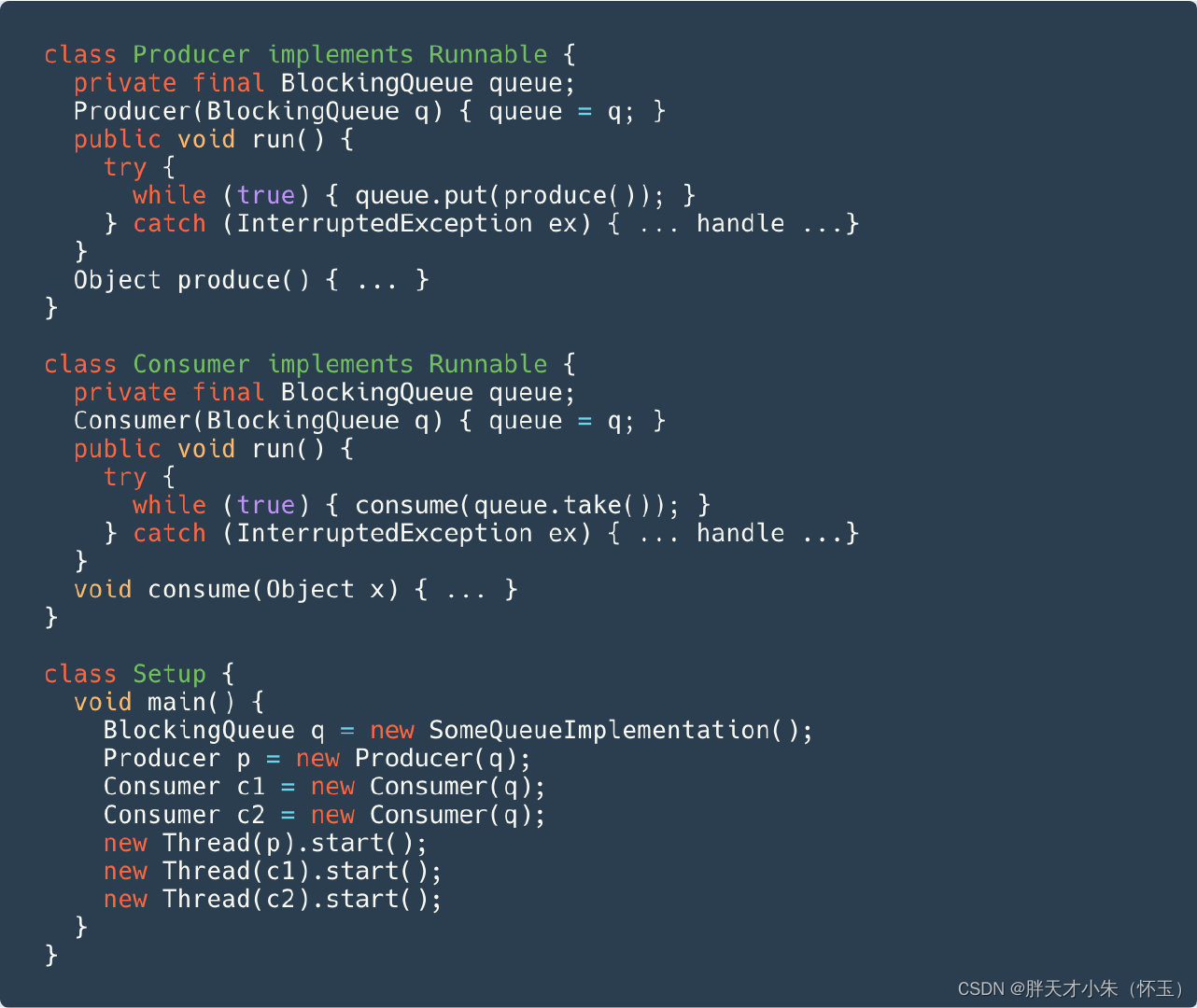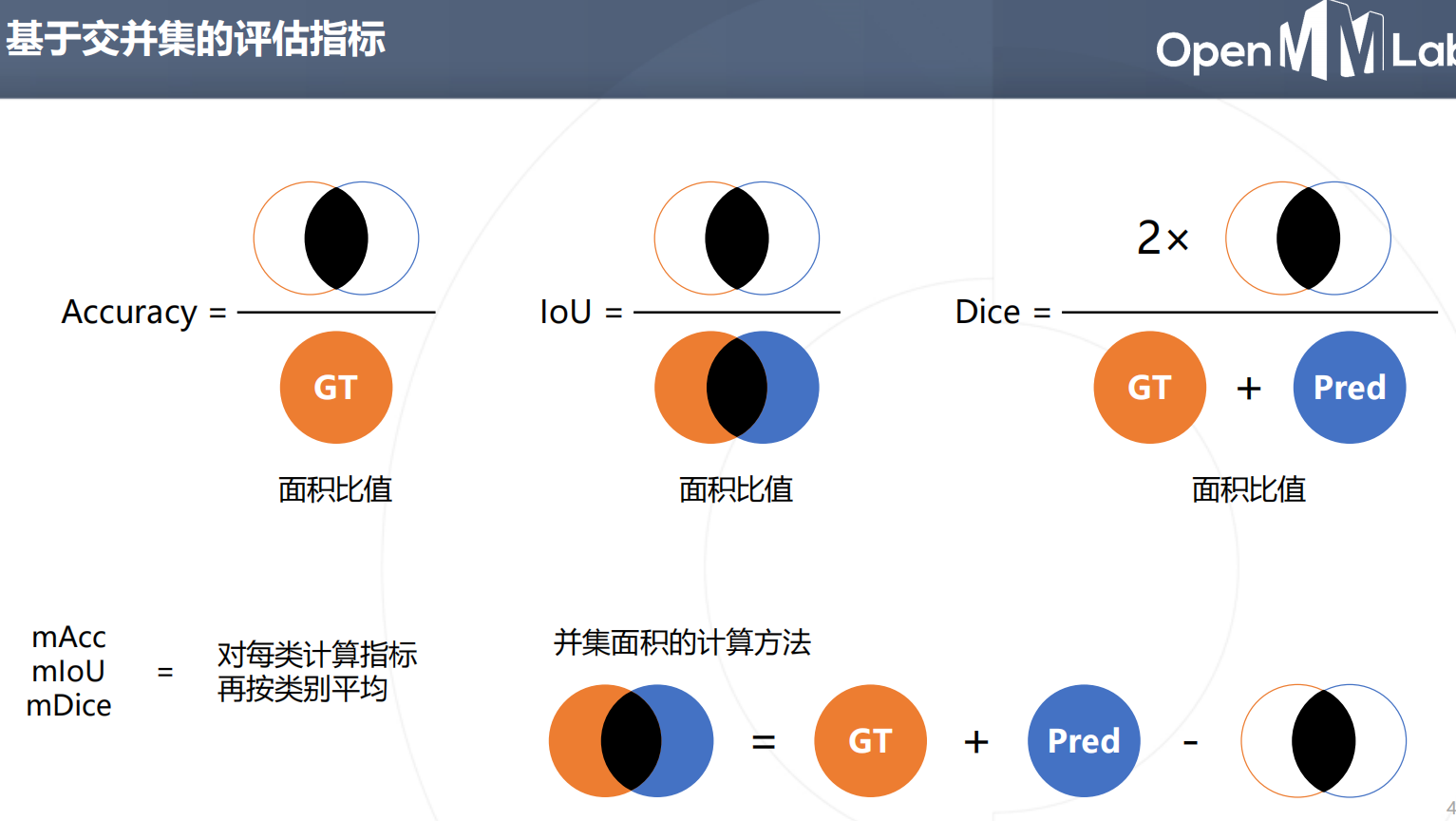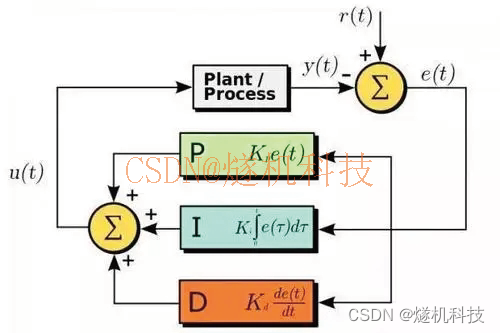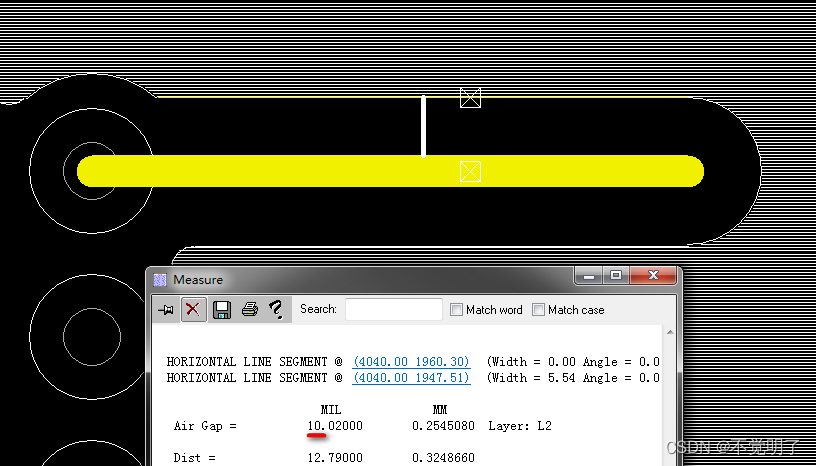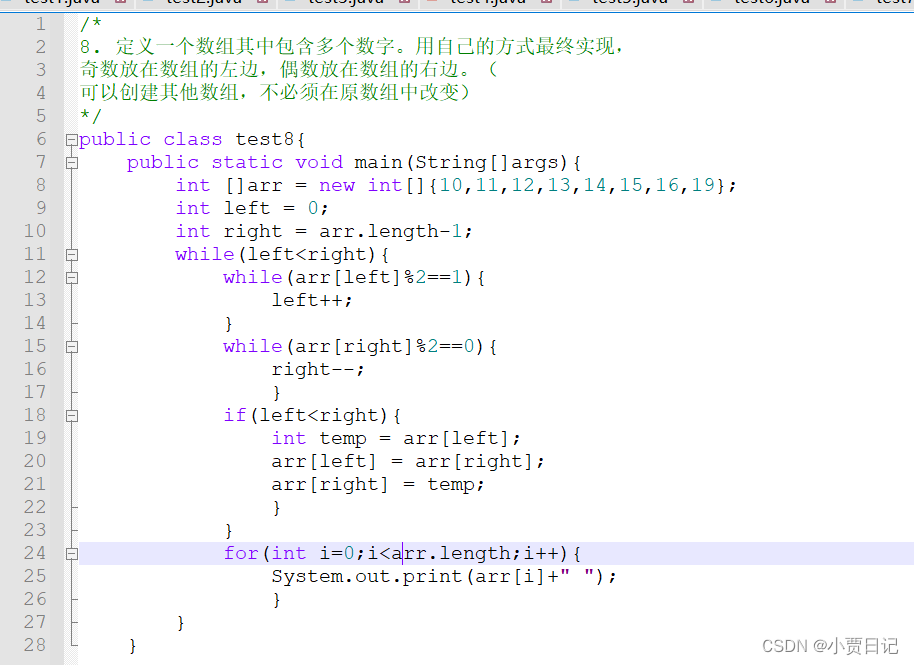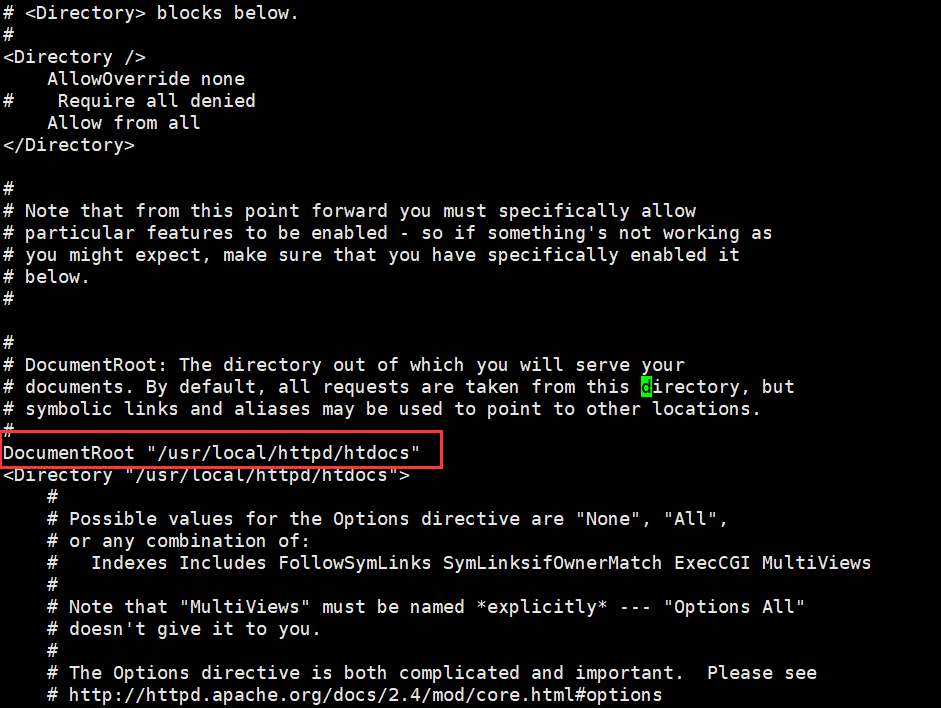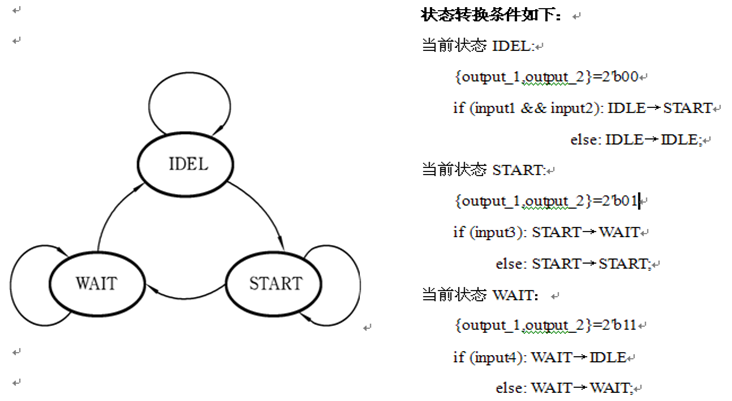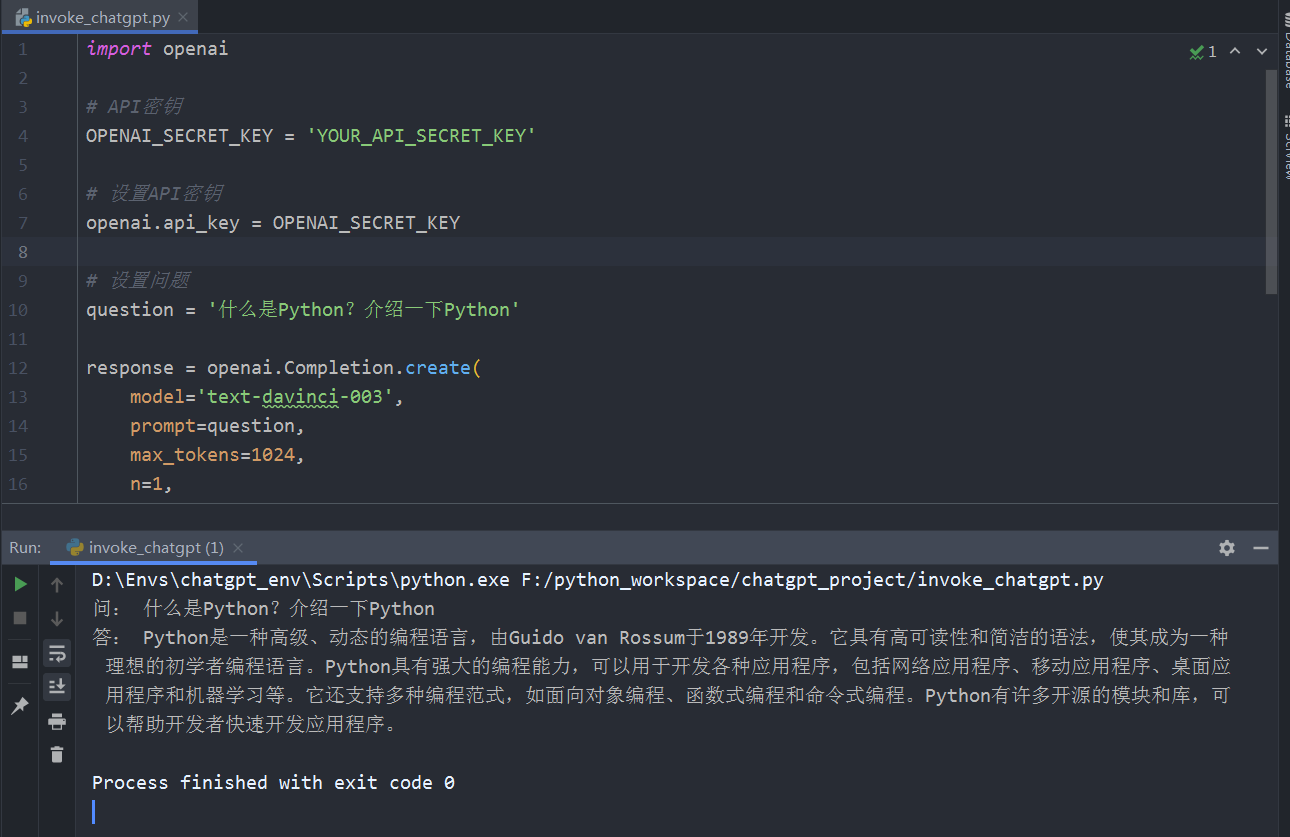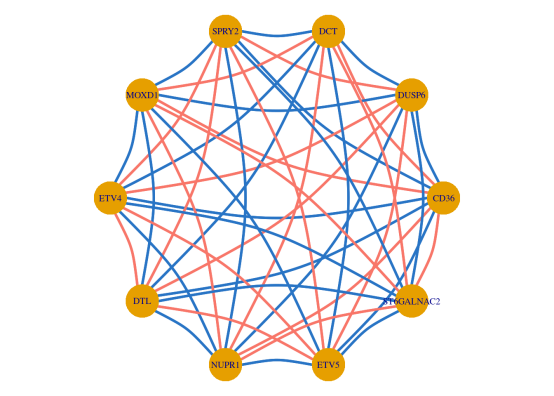文章目录
- 前言
- 1. K模型
- 2. KV模型
- 🍑 构建KV模型的树
- 🍑 英汉词典
- 🍑 统计水果出现的次数
- 3. 总结
前言
在上一篇文章中,我们进行了二叉查找树的实现(文章链接),那么今天主要探讨一下二叉查找树的应用
1. K模型
K 模型即只有 key 作为关键码,结构中只需要存储 Key 即可,关键码即为需要搜索到的值。
比如:给一个单词 word,判断该单词是否拼写正确,具体方式如下:
- 以单词集合中的每个单词作为 key,构建一棵二叉查找树
- 在二叉查找树中检索该单词是否存在,存在则拼写正确,不存在则拼写错误。
其实这个 K 模型就是上一篇文章中,我们实现的二叉查找树。
2. KV模型
所谓 KV 模型就是每一个关键码 key,都有与之对应的值 Value,即 <Key, Value> 的键值对。
这种方式在现实生活中非常常见:比如英汉词典就是英文与中文的对应关系,通过英文可以快速找到与其对应的中文,英文单词与其对应的中文 <word, chinese>就构成一种键值对;
再比如统计单词次数,统计成功后,给定单词就可快速找到其出现的次数,单词与其出现次数就是 <word, count> 就构成一种键值对。
下面我们就构造一个 KV 模型的二叉查找树,然后用这棵树来做一些应用。
🍑 构建KV模型的树
我这里直接用递归的方式实现整颗树,需要添加一个模板参数 Value,另外对于查找函数 Find 的返回值就不能写成 bool 类型了,而是需要写成 Node* 类型,因为 Key 不能被修改,但是我们可以通过返回的节点类型来修改 Key 对应的 Value。
代码实现
// KV模型
namespace key_value
{
// 节点类
template<class K, class V>
struct BSTreeNode
{
BSTreeNode<K, V>* _left; // 左指针
BSTreeNode<K, V>* _right; // 右指针
K _key; // 关键码
V _value; // 对应的值
// 构造函数
BSTreeNode(const K& key, const V& value)
:_left(nullptr)
, _right(nullptr)
, _key(key)
, _value(value)
{}
};
// 二叉查找树类
template<class K, class V>
class BSTree
{
typedef BSTreeNode<K, V> Node;
public:
// 中序遍历
void InOrder()
{
_InOrder(_root);
cout << endl;
}
// 查找函数
Node* FindR(const K& key)
{
return _FindR(_root, key);
}
// 插入函数
// 注意:这里除了要插入key,还要插入对应的value
bool InsertR(const K& key, const V& value)
{
return _InsertR(_root, key, value);
}
// 删除函数(只需要删除key即可)
bool EraseR(const K& key)
{
return _EraseR(_root, key);
}
private:
// 删除函数(递归删除子函数)
bool _EraseR(Node*& root, const K& key)
{
if (root == nullptr)
return false;
if (root->_key < key)
{
return _EraseR(root->_right, key);
}
else if (root->_key > key)
{
return _EraseR(root->_left, key);
}
else
{
Node* del = root;
// 删除
if (root->_left == nullptr)
{
root = root->_right;
}
else if (root->_right == nullptr)
{
root = root->_left;
}
else
{
Node* minRight = root->_right;
while (minRight->_left)
{
minRight = minRight->_left;
}
swap(root->_key, minRight->_key);
return _EraseR(root->_right, key);
}
delete del;
return true;
}
}
// 插入函数(递归插入子函数)
bool _InsertR(Node*& root, const K& key, const V& value)
{
if (root == nullptr)
{
root = new Node(key, value);
return true;
}
if (root->_key < key)
return _InsertR(root->_right, key, value);
else if (root->_key > key)
return _InsertR(root->_left, key, value);
else
return false;
}
// 查找函数(递归查找子函数)
Node* _FindR(Node* root, const K& key)
{
if (root == nullptr)
return nullptr;
if (root->_key < key)
{
return _FindR(root->_right, key);
}
else if (root->_key > key)
{
return _FindR(root->_left, key);
}
else
{
return root;
}
}
// 中序遍历(递归遍历子函数)
void _InOrder(Node* root)
{
if (root == nullptr)
return;
_InOrder(root->_left);
cout << root->_key << ":" << root->_value << endl;
_InOrder(root->_right);
}
private:
Node* _root = nullptr;
};
}
🍑 英汉词典
用这棵树实现一个简单的英汉词典 dict,可以通过英文找到与其对应的中文。
以 <单词, 中文含义> 为键值对构造二叉查找树时,二叉查找树需要进行键值对的比较,并且只需要比较 Key,查询英文单词时,只需给出英文单词,就可快速找到与其对应的 key。
代码实现
void TestBSTree1()
{
BSTree<string, string> ECDict;
ECDict.InsertR("root", "根");
ECDict.InsertR("string", "字符串");
ECDict.InsertR("left", "左边");
ECDict.InsertR("insert", "插入");
ECDict.InsertR("erase", "删除");
ECDict.InsertR("right", "右边");
cout << "请输入要查找的单词: ";
string str; // 输入要查找的单词
while (cin >> str)
{
auto ret = ECDict.FindR(str);
if (ret != nullptr)
{
cout << "对应的中文:" << ret->_value << endl; // 如果单词存在,输出对应的中文
}
else
{
cout << "无此单词,请重新输入" << endl; // 如果单词不存在
}
}
}
可以看到,当我们输入树中存在的单词时,就会显示对应的中文,如果单词不存在,就不会显示。
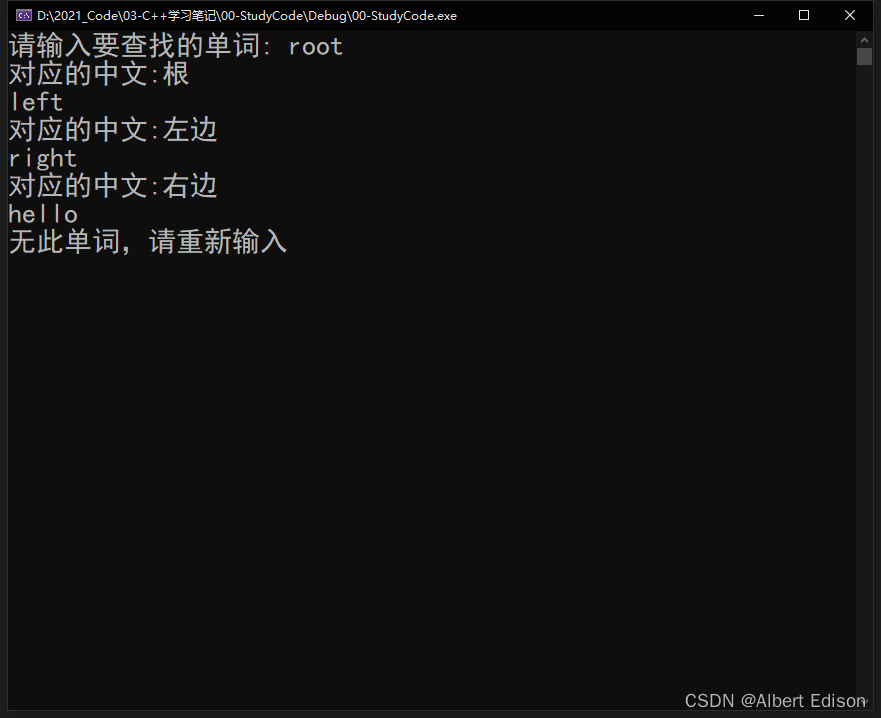
如果我们要修改某个单词的中文也是可以的,只需要修改节点指向的 Value 即可。
🍑 统计水果出现的次数
KV 模型的二叉树还可以用来统计某个元素出现的次数。
比如下面有一组水果,现在我需要统计水果出现的次数,并输出。
代码实现
void TestBSTree2()
{
string arr[] = { "苹果", "西瓜", "苹果", "西瓜", "苹果", "苹果", "西瓜", "苹果", "香蕉", "苹果", "香蕉" };
// 水果出现的次数
BSTree<string, int> countTree; // key是字符串; value是次数
for (const auto& str : arr)
{
auto ret = countTree.FindR(str); // 查找该水果是否存在
if (ret == nullptr) // 如果该水果不存在
{
countTree.InsertR(str, 1); // 就插入到树中,并把次数置为1(出现了一次)
}
else // 如果该水果存在
{
ret->_value++; // 就修改value
}
}
// 打印结果
countTree.InOrder();
}
可以看到水果的次数已经被统计出来了

3. 总结
对于 K 模型的二叉查找树上节课我们已经说过了,它有很多缺点,后面的 AVL树 就是在它的基础上进行优化的,那么与之对应的就是 STL 当中的 set 容器,它的底层就是一颗 K 模型的二叉查找树。
对于 KV 模型的二叉查找树,它与之对应的是 STL 当中的 map 容器,它的底层是一颗 KV 模型的二叉查找树。
